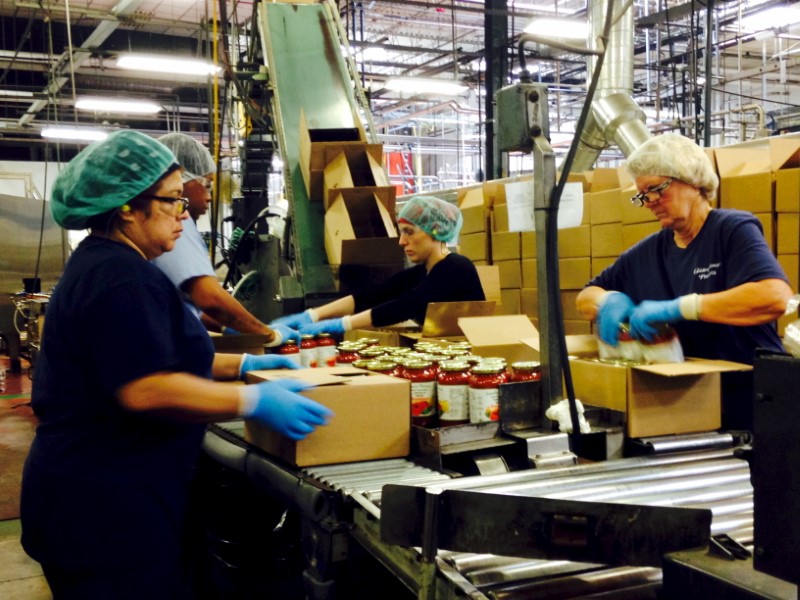By Lucia Mutikani
WASHINGTON (Reuters) - U.S. producer prices increased more than expected in June amid gains in the cost of services and motor vehicles, leading to the biggest annual increase in 6-1/2 years.
The report published by the Labor Department on Wednesday also showed a pickup in underlying producer inflation last month. Economists expect tariffs on lumber, steel and aluminum imports to drive up prices, likely keeping the Federal Reserve on track to increase interest rates two more times this year.
"With underlying inflationary pressures building even before the tariffs, we suspect the Fed will be forced to continue raising rates once a quarter," said Michael Pearce, senior U.S. economist at Capital Economics in New York.
The producer price index for final demand climbed 0.3 percent last month after rising 0.5 percent in May. That pushed the annual increase in the PPI to 3.4 percent, the largest rise since November 2011, from 3.1 percent in May.
Economists polled by Reuters had forecast the PPI gaining 0.2 percent in June and increasing 3.2 percent year-on-year.
A key gauge of underlying producer price pressures that excludes food, energy and trade services rose 0.3 percent last month. The so-called core PPI edged up 0.1 percent in May.
In the 12 months through June, the core PPI advanced 2.7 percent after increasing 2.6 percent in May.
There were gains in the cost of materials used in manufacturing and construction, a sign that the duties on steel and aluminum imports were raising prices.
President Donald Trump imposed the tariffs to protect domestic industries from what he says is unfair competition from foreign manufacturers. Major trade partners, including China, the European Union, Canada and Mexico have retaliated with tariffs of their own.
Last week, the Trump administration slapped 25 percent tariffs on $34 billion of Chinese imports, eliciting a similar response from Beijing. On Tuesday, Trump threatened 10 percent tariffs on $200 billion of Chinese goods.
Prices for softwood lumber, iron and steel mill products as well as nonferrous metal products increased in June.
"Since the PPI covers the price of domestically produced goods, these gains represent U.S. producers raising prices behind the tariff wall or the impact of higher input costs," said John Ryding, chief economist at RDQ Economics in New York. "We expect these price pressures will flow through into higher core inflation at the consumer level as the year unfolds."
RISING INPUT COSTS
Manufacturers have been facing a rise in the cost of inputs, but so far have not passed on the increases to consumers. Inflation is steadily rising against the backdrop of a labor market that is viewed as being near or at full employment.
The Fed's preferred inflation measure, the personal consumption expenditures (PCE) price index excluding food and energy, hit the U.S. central bank's 2 percent target in May for the first time in six years. The Fed raised interest rates in June for the second time this year and has forecast two more rate hikes by the end of 2018.
U.S. financial markets were little moved by the data as investors focused on the escalating trade tensions between the United States and China. U.S. stocks were trading lower while the dollar rose against a basket of currencies. Prices for U.S. Treasuries fell.
In June, the cost of services increased 0.4 percent after climbing 0.3 percent in May. A 21.8 percent jump in the index for fuels and lubricants retailing accounted for about 40 percent of the rise in the cost of services.
The cost of healthcare services rose 0.2 percent as a 1.0 percent surge in prices for hospital outpatient care offset slight declines in the cost of doctor visits and hospital inpatient care. Healthcare prices nudged up 0.1 percent in May.
Those healthcare costs feed into the core PCE price index.
There were also increases in the cost of transporting goods by road, likely reflecting an acute shortage of truck drivers. Truck transportation prices soared a record 1.3 percent in June.
But wholesale prices of apparel and footwear fell as did the cost of airline tickets.
Prices for goods edged up 0.1 percent last month after surging 1.0 percent in May. They were last month restrained by a 1.1 percent drop in food prices. Wholesale gasoline prices rose 0.5 percent after jumping 9.8 percent in May.

Excluding foods and energy, goods prices climbed 0.3 percent, rising by the same margin for a sixth consecutive month. Motor vehicle prices increased 0.4 percent in June, the biggest gain in seven months.